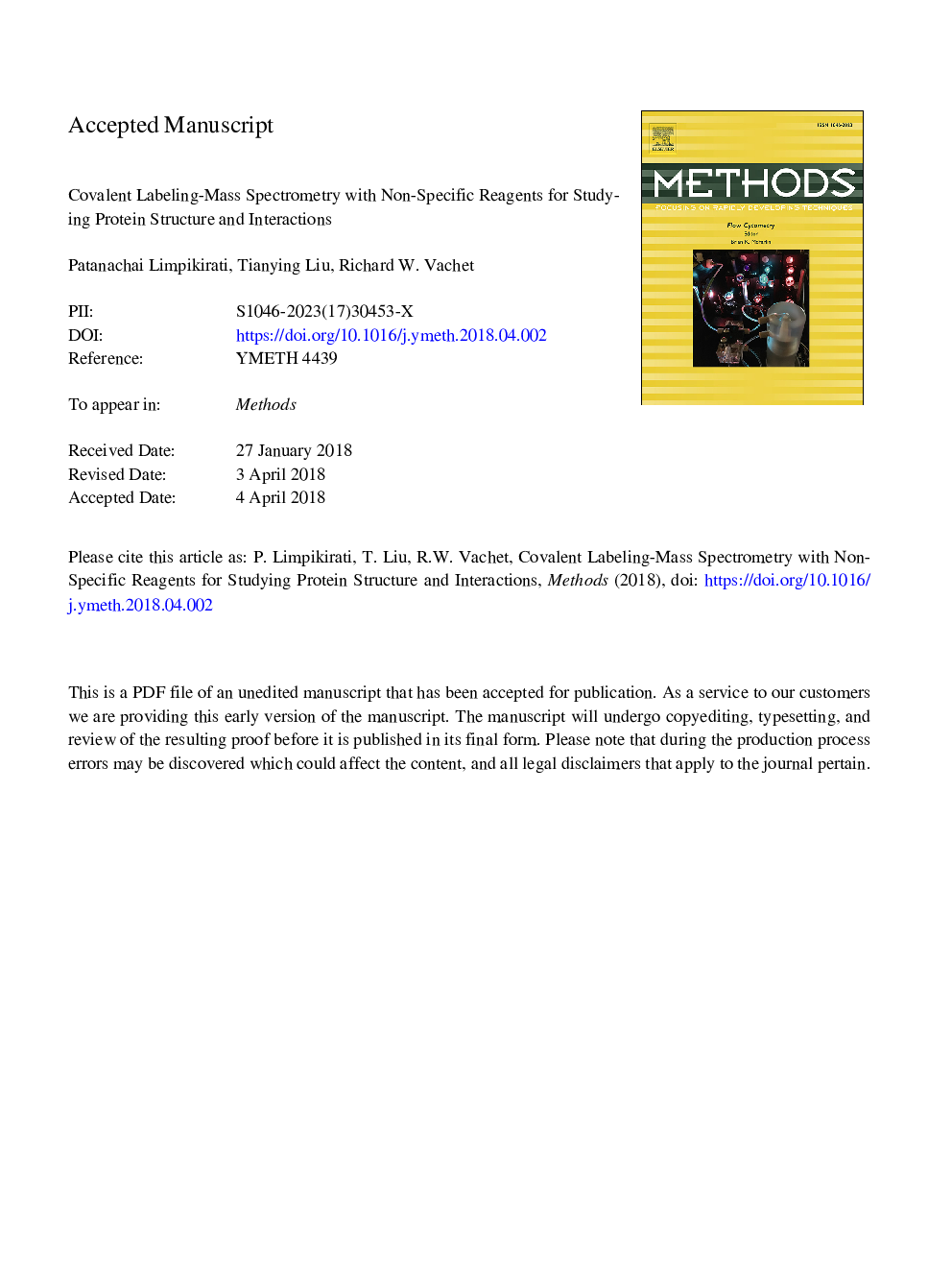| Article ID | Journal | Published Year | Pages | File Type |
|---|---|---|---|---|
| 8340005 | Methods | 2018 | 44 Pages |
Abstract
Using mass spectrometry (MS) to obtain information about a higher order structure of protein requires that a protein's structural properties are encoded into the mass of that protein. Covalent labeling (CL) with reagents that can irreversibly modify solvent accessible amino acid side chains is an effective way to encode structural information into the mass of a protein, as this information can be read-out in a straightforward manner using standard MS-based proteomics techniques. The differential reactivity of proteins under two or more conditions can be used to distinguish protein topologies, conformations, and/or binding sites. CL-MS methods have been effectively used for the structural analysis of proteins and protein complexes, particularly for systems that are difficult to study by other more traditional biochemical techniques. This review provides an overview of the non-specific CL approaches that have been combined with MS with a particular emphasis on the reagents that are commonly used, including hydroxyl radicals, carbenes, and diethylpyrocarbonate. We describe the reagent and protein factors that affect the reactivity of amino acid side chains. We also include details about experimental design and workflow, data analysis, recent applications, and some future prospects of CL-MS methods.
Related Topics
Life Sciences
Biochemistry, Genetics and Molecular Biology
Biochemistry
Authors
Patanachai Limpikirati, Tianying Liu, Richard W. Vachet,
